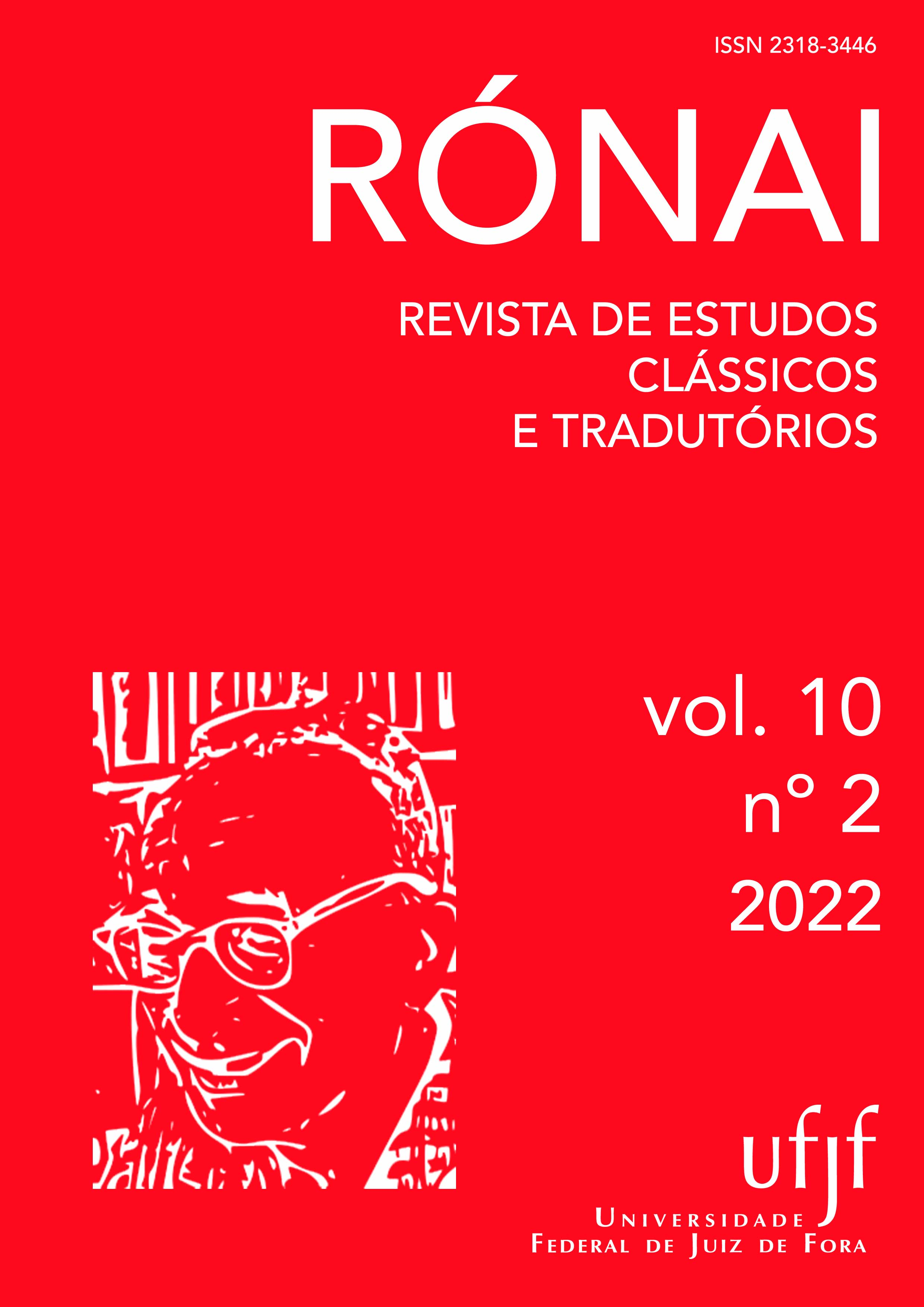Cotidiano e zombaria nos grafitti latinos: introdução e tradução
DOI:
https://doi.org/10.34019/2318-3446.2022.v10.39006Palavras-chave:
inscrições, epigrafia, tradução, cultura romana, graffitiResumo
Neste trabalho, traduziremos para o português uma seleção de grafitti romanos com temática cotidiana e galhofeira, com base no catálogo de Luca Canali e Guglielmo Cavallo (1998) na obra Graffiti latini: scrivere sui muri a Roma antica. Tratando-se de uma tipologia epigráfica que serve como retrato do cotidiano e das nuances zombeteiras e picarescas dos romanos na Antiguidade, os grafitti portam mensagens direcionadas para uma coletividade contemporânea ou futura à época de sua incisão ou gravação num contexto mais particular. Apresentamos esta proposta de tradução com alguns comentários que possam esclarecer aspectos das inscrições parietais.Downloads
Referências
CANALI, Luca; CAVALLO, Guglielmo. Graffiti latini: scrivere sui muri a Roma antica. Milão: Rizzoli, 1998.
FARIA, Ernesto. Dicionário Escolar Latino - Português. Rio de Janeiro: FENAME, 1992.
GARRAFFONI, Renata Senna. Arte Parietal de Pompéia: Imagem e cotidiano no mundo romano. Domínios da Imagem, v. 1, n. 1, p. 149-161, 2007.
GOMES, Raquel de Morais Soutelo; BORGES, Airan dos Santos. Escrito para a Eternidade: A Epigrafia e os Estudos da Antiguidade. Curitiba: Editora Appris, 2018.
OVÍDIO. Amores e arte de amar. Tradução de Carlos Ascenso André, prefácio e apêndice de Peter Green. São Paulo: Penguin/Cia. das Letras, 2011.
PETRÔNIO. Satíricon. Tradução, introdução e posfácio de Cláudio Aquati. São Paulo: Editora 34, 2021.
SUSINI, Giancarlo. Epigrafia romana. Roma: Jouvence, 1982.
THE ANCIENT Graffiti Project. Disponível em: http://ancientgraffiti.org/Graffiti. Acessado em: 03 set. de 2022.
WALLACE, Rex. An introduction to wall inscriptions from Pompeii and Herculaneum. Introduction, inscriptions with notes, historical commentary, vocabulary. Wauconda: Bolchazy-Carducci Publishers, 2005.
VARONE, Antonio. Erotica pompeiana: love inscriptions on the walls of Pompeii. Roma: L'Erma di Bretschneider, 2002.
Downloads
Publicado
Como Citar
Edição
Seção
Licença
Copyright (c) 2022 Danilo Oliveira Nascimento Julião, Gelbart Souza Silva

Este trabalho está licenciado sob uma licença Creative Commons Attribution 4.0 International License.
Direitos Autorais
Autores que publicam nesta revista concordam com os seguintes termos:
1. Autores e autoras mantém os direitos autorais e concedem à revista o direito de primeira publicação, sendo a publicação licenciada sob a Creative Commons Attribution License 4.0 Internacional.
2. Os autores e autoras têm permissão e são estimulados(as) a publicar e compartilhar o trabalho com reconhecimento da publicação inicial nesta revista.
3. Os autores e autoras dos trabalhos aprovados autorizam a revista a ceder o conteúdo de seus trabalhos, após sua publicação, para reprodução em indexadores de conteúdo, bibliotecas virtuais e similares.
Para mais informações sobre a Creative Commons Attribution 4.0 International License, acessar: https://creativecommons.org/licenses/by/4.0/
Isenção editorial
O conteúdo dos artigos publicados é de inteira e exclusiva responsabilidade de seus autores, não representando a posição oficial da Rónai - Revista de Estudos Clássicos e Literários ou do Faculdade de Letras da Universidade Federal de Juiz de Fora ou das instituições parceiras.



